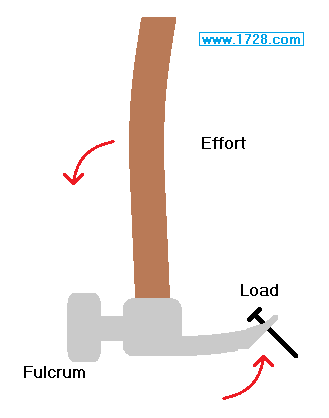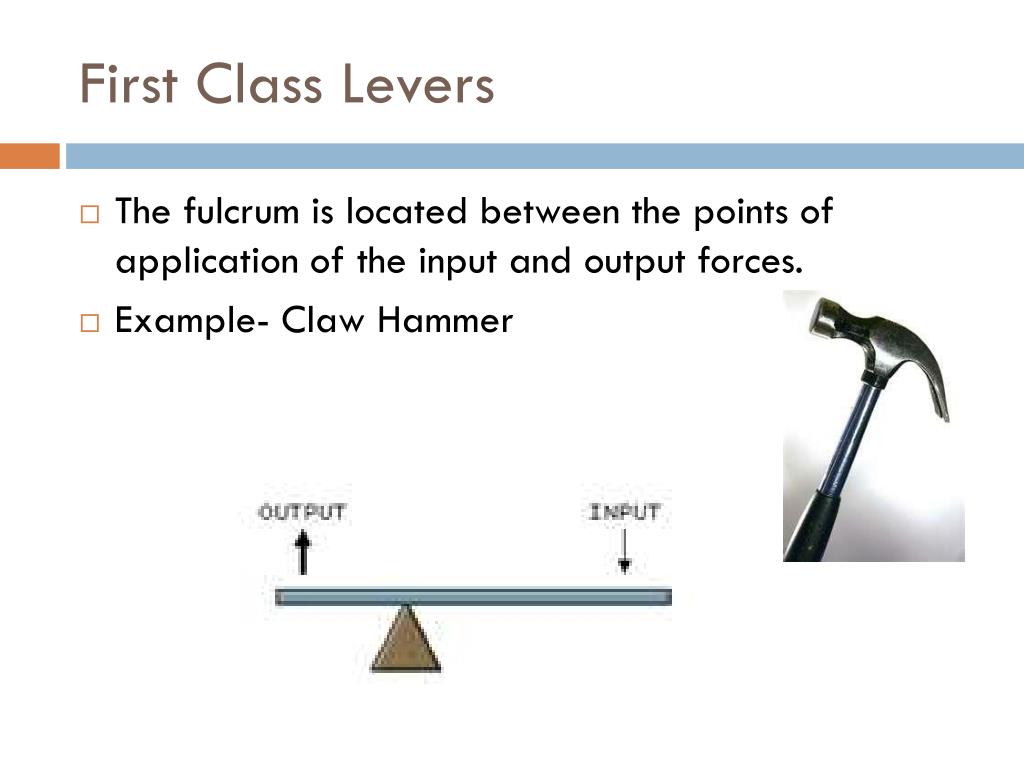When you’re fixing or building something, a claw hammer is one of those tools you’ll often find in your toolbox. But have you ever wondered what kind of simple machine a claw hammer is? Well, get ready to dive into the world of mechanics, because we’re about to explore the fascinating world of claw hammers and simple machines!
You might think that a claw hammer is just a handy tool for driving nails into wood or prying them out. But did you know that this versatile tool is actually a combination of two simple machines? That’s right! A claw hammer is both a lever and a wedge, working together to make your DIY projects a breeze.
So, what exactly makes a claw hammer a lever and a wedge? Let’s take a closer look at the components and mechanisms that make this common tool an extraordinary example of simple machines in action. Get ready to unlock the secrets behind the functionality of a claw hammer!

Understanding the Claw Hammer: A Simple Machine in Your Toolbox
The claw hammer is a classic tool that can be found in nearly every toolbox. Although it may seem like a simple tool, the claw hammer actually incorporates several different types of simple machines to make tasks easier. In this article, we will explore the various simple machines that are present in a claw hammer and how they work together to make it a versatile and efficient tool.
1. Levers in the Claw Hammer
The most prominent simple machine in a claw hammer is the lever. Levers are essentially rigid bars that pivot on a fulcrum to magnify forces or allow tasks to be performed with less effort. In a claw hammer, the handle serves as the lever arm, and the fulcrum is the point where the handle connects to the hammerhead.
The lever action of the claw hammer allows the user to generate a significant amount of force when driving nails. By gripping the handle near the end and positioning the hammerhead against the nail, the user can exert a downward force, leveraging the longer length of the handle to amplify the force applied to the nail. This makes it easier to drive nails into various materials, from wood to metal.
2. Wedges in the Claw Hammer
Another simple machine found in the claw hammer is the wedge. Wedges are inclined planes used to separate objects or hold them in place. In the case of a claw hammer, the wedges can be seen in both the shape of the claw and the tapering design of the hammerhead.
The claw of the hammer acts as a wedge when it is used for pulling nails. When the curved end of the claw is inserted beneath the head of a nail and pressure is applied, the wedge-like shape of the claw forces the nail out of the material. This makes nail removal much easier and more efficient.
Additionally, the tapering design of the hammerhead creates a wedge-like effect when striking objects. The tapered shape concentrates force at the point of impact, making it easier to drive nails into dense materials.
3. Wheel and Axle in the Claw Hammer
The wheel and axle is another simple machine that is present in the claw hammer. While it may not be as obvious as the lever and wedge, the wheel and axle mechanism can be seen in the rotation of the hammerhead around the handle.
When the hammer is swung, the circular motion of the hammerhead around the handle utilizes the wheel and axle principle. The handle acts as the axle, and the hammerhead acts as the wheel. This allows for smooth and controlled movement, making it easier to strike objects accurately.
Additionally, the rotation of the hammerhead around the handle allows for versatility in hammering tasks. By adjusting the angle of the hammerhead, the user can hammer in tight spaces or adjust the direction of impact.
4. Pulleys in the Claw Hammer
Although not as prominently featured as the lever, wedge, and wheel and axle, pulleys can also be found in the claw hammer. Pulleys are simple machines that consist of a wheel with a grooved rim and a rope or chain that runs in the groove.
In the case of the claw hammer, the pulley mechanism can be observed in the movement of the claw when extracting nails. When the user applies force to the handle of the hammer and pulls upward, the rope-like material connecting the handle to the claw wraps around the groove in the claw. This creates a mechanical advantage, allowing the user to exert more force and pull the nail out with ease.
By incorporating these different types of simple machines, the claw hammer becomes a versatile tool that combines strength, accuracy, and efficiency. Understanding the principles behind the simple machines present in the claw hammer can help users maximize its potential and make the most out of this staple tool in their toolbox.
Key Takeaways: Which Kind of Simple Machine is a Claw Hammer?
In simple terms, a claw hammer is a type of lever, which is a simple machine.
The handle of the claw hammer acts as the lever arm, and the head of the hammer acts as the fulcrum or pivot point.
When you strike a nail with a claw hammer, the lever arm amplifies the force applied to the nail, making it easier to drive it into the material.
The claw part of the hammer is also a simple machine known as a wedge, which helps in removing nails by applying force in a concentrated area to pry them out.
So, overall, a claw hammer uses the principles of both levers and wedges to make it easier to drive and remove nails.
## Frequently Asked Questions
In the world of simple machines, claw hammers serve a specific purpose. Here are some commonly asked questions related to the kind of simple machine a claw hammer is:
1. How does a claw hammer work as a simple machine?
Answer: A claw hammer can be classified as a lever, one of the six types of simple machines. The long handle acts as the lever arm, while the curved claw functions as the load arm. When force is applied to the handle, it creates a pivot point, allowing you to generate torque and drive nails into surfaces or remove them.
A claw hammer’s lever action enables you to multiply the force applied, making it easier to perform tasks such as driving nails. The design of the claw at the back of the hammer also allows for the effective removal of nails by leveraging the force generated by the person using it.
2. What advantage does a claw hammer offer as a simple machine?
Answer: As a lever, a claw hammer offers the advantage of amplifying the applied force, making it easier to accomplish tasks that would otherwise require more effort. The long handle of the claw hammer allows for increased leverage, translating into greater force at the point of contact with the nail.
In addition, the claw at the back of a claw hammer provides the advantage of leverage in pulling nails out of surfaces. By positioning the nail between the claw’s teeth and using the lever action of the hammer, you can efficiently extract it with less force required compared to other methods.
3. Are there any other simple machines used in conjunction with a claw hammer?
Answer: While a claw hammer is primarily a lever, its functionality can be enhanced by employing other simple machines. For example, when using a claw hammer, you may also utilize an inclined plane, such as a nail set or a starting punch, to position the nail before driving it into a surface.
Additionally, you can pair a claw hammer with a wedge, another type of simple machine, to split wood. By positioning the wedge in the wood grain and striking it with the hammer, the wedge’s taper amplifies the splitting force, making the task more manageable.
4. Can a claw hammer be classified as a compound machine?
Answer: No, a claw hammer is typically classified as a simple machine because it consists primarily of a single lever. However, it can be argued that a claw hammer incorporates the use of two simple machines: a lever and a wedge, which is part of the claw. Regardless, the overall design and functionality of a claw hammer align more with that of a simple machine rather than a compound machine.
5. What are some common uses of a claw hammer?
Answer: Claw hammers are commonly used for tasks such as driving nails into various surfaces, such as wood or drywall, in construction, carpentry, and DIY projects. The leverage provided by the long handle allows for efficient and accurate placement of nails.
Furthermore, the claw at the back of a claw hammer enables the removal of nails or other small objects. Its versatility makes it a widely used tool in fields that require manual work and precision.

Summary
A claw hammer is a simple machine called a lever. Levers help us lift heavy things!
When we use a claw hammer, we place the metal part under a nail. Then we apply force to the handle by hitting it. This force gets transferred to the metal part, allowing the nail to be pushed in or pulled out. It’s like using a seesaw to move something heavy!
So next time you see a claw hammer, remember that it’s a lever and a handy tool to have around the house.
